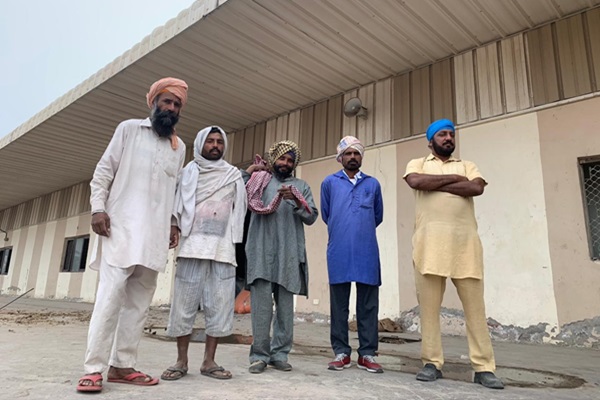.png)
With Borders Shut, Punjab’s Economy Needs An Inland Pivot
Punjab’s economy feels the pinch as the border stays shut. The situation demands an urgent pivot: from dead ends to crucial infra reforms and links to key trade corridors.


By Nikita Singla
Nikita Singla is an international trade specialist, a non-resident scholar with the South Asia program at the Carnegie Endowment for International Peace, Washington DC. She has done extensive research on India-Pakistan trade.
May 19, 2025 at 1:39 PM IST
As tensions flare between India and Pakistan, trade becomes the first casualty. And Punjab is the first to feel the pain. With the Wagah-Attari border shut yet again after the Pahalgam terror attack, the state finds itself caught in a loop: high on security risks, low on economic options.
Trade is no longer just about goods; it’s a powerful tool in geopolitics. When tensions rise, borders get sealed, tariffs spike, and livelihoods get disrupted, especially for local communities that solely depend on cross-border trade.
Nowhere is this more visible than in Punjab.
Border Freeze
Back in 2019, following the Pulwama terror attack, India revoked Pakistan’s ‘Most Favoured Nation’ status and imposed a 200% customs duty on imports. A few months later, after the abrogation of Article 370 in Jammu & Kashmir, Pakistan responded by suspending trade, downgrading diplomatic ties, and shutting its airspace to Indian carriers. Since then, trade between the two countries has been virtually non-existent; marking six years of economic dormancy.
The impact has been deep and disproportionate, especially for Punjab, particularly in and around Amritsar. Although India’s exports to and imports from Pakistan accounted for just 0.63% and 0.10% of its total exports and imports, respectively, the Attari-Wagah land route alone recorded annual trade worth over ₹4,000 crore in 2018-19. While negligible in India’s global trade ledger, this border trade held outsized importance for Punjab’s local economy.
For instance, nearly 50,000 people in Amritsar alone depended on this trade route: traders, customs agents, truck drivers, dhaba owners, mechanics, porters, and even women who relied on hand-cutting dry dates to make a living. The ripple effect extended to nearby districts like Tarn Taran, Ferozepur, Gurdaspur, and Ludhiana.
The freeze in cross-border trade since 2019 has had cascading effects: jobs lost, infrastructure wasted, and economic potential stalled. Since then, the state has been limping along. While some symbolic exceptions were made—pharmaceuticals, and occasional shipments of sugar or cotton—these were far from being gamechangers.
A handful of traders had kept a sliver of activity alive through Afghan exports to India allowed under the Afghanistan-Pakistan Transit Trade Agreement. However, since the Pahalgam terror attack last month, that channel has also been closed.
Broken Links
There’s no doubt Punjab’s trade community supports the national stance: trade and terror cannot go hand in hand. But they also point out a hard truth: Amritsar is landlocked, not a major industrial centre. It has few economic alternatives.
The state’s geography exacerbates the situation. Unlike Gujarat or Maharashtra, it lacks access to ports, and has little industrial diversity. The farm sector is already under pressure, youth unemployment is rising and a history of substance abuse, combined with weak connectivity to national markets, puts the state on the brink of economic fatigue.
What Punjab needs now is not a plea to reopen trade, but a practical strategy to reduce its reliance on unpredictable trade relations. Projects like the Patti-Makhu rail link, which could cut 240 km from the crucial Amritsar-Mumbai route, deserve urgent attention.
They promise access not just to ports but to wide opportunity: linking Punjab to southern and western industrial corridors that are alive and growing. Alongside, establishment of a rail-linked Inland Container Depot at the Attari border can offer enhanced opportunities for handling containerised cargo and enable seamless multimodal connectivity.
There’s also untapped potential in air connectivity. With the right infrastructure, cold storage, and possibly a freight subsidy, Amritsar’s airport could become a regional cargo hub, making exports viable again and providing access to western markets in Central Asia and beyond. Instead of waiting for cross-border trade to resume, Punjab can pivot to becoming a logistics bridge for the north.
At a time when the country is investing in multi-modal logistics parks, defence corridors, and inland freight infrastructure, Punjab’s strategic location at the frontier should make it a priority, not an afterthought.
Land borders may remain closed. That’s a sovereign decision rooted in national interest. But even as the country remains firm on security, the governments must ensure that regions like Punjab, which stand at the frontlines of both conflict and consequence, are not left behind. Strengthening the state’s economy is not just about regional development; it is national resilience.







